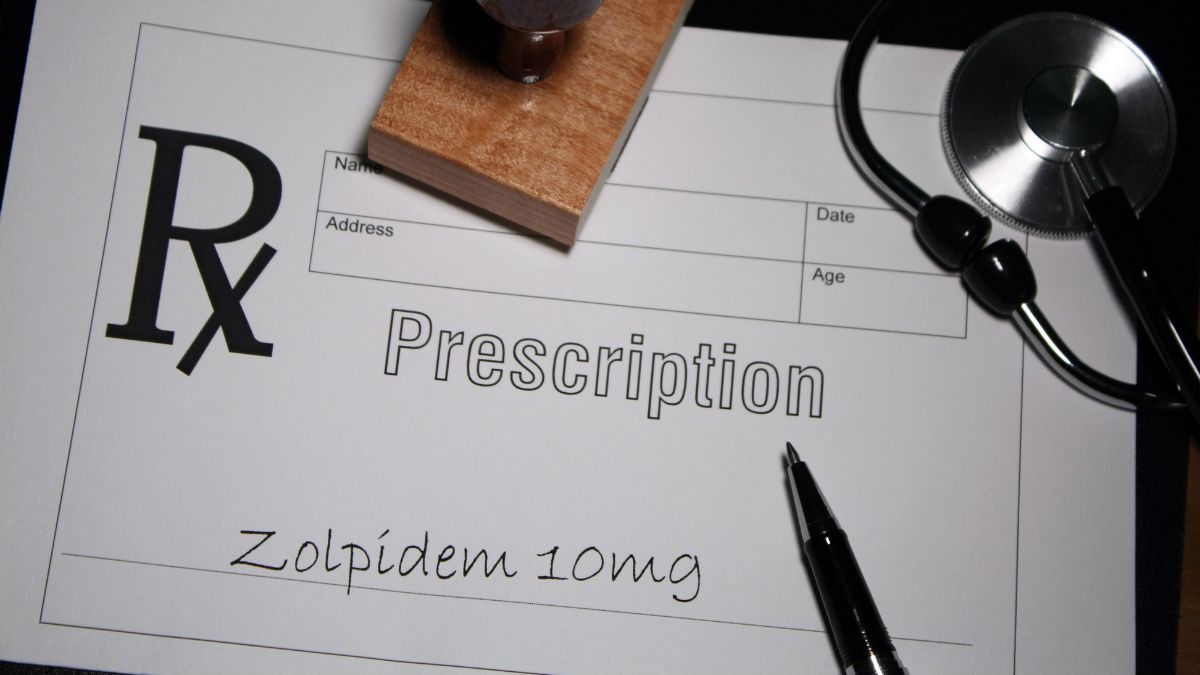Whether you’ve just stopped taking Percocet or are worried about drug testing, understanding how long it stays in your system is essential. Understanding the nature of this drug and how it affects the body is essential for anyone hoping to recover from Percocet addiction.
For anyone abusing or addicted to Percocet, quitting is difficult without outside help. The drug continues to affect the body for a long time, and individuals who stop taking it are likely to face a wide range of symptoms.
Let’s dive deeper to know more.
What is Percocet?
Percocet is a prescription painkiller that contains two drugs: the opioid oxycodone, as well as the mild analgesic acetaminophen. While Percocet is an effective treatment for moderate to severe pain when it is used as prescribed, the drug has a high potential for addiction.
Many people misuse Percocet by taking it in dangerous ways, like smoking, snorting, or injecting it. These methods can quickly lead to addiction and serious health problems. Percocet contains acetaminophen (also found in Tylenol), which is safe in small amounts but can be toxic in high doses. Taking too much acetaminophen can damage the liver and even be life-threatening.
Factors Affecting Detection Time
The length of time that Percocet stays can vary depending on certain factors that impact how the drug is processed in the body. Some of these are:
- Dosage and Frequency at which the drug is taken
- The method in which the drug is used, like snorting or injecting
- Metabolism
- Age and body composition
- Liver and Kidney Health
- Hydration
- Activity level
Call Design for Recovery to Begin Your Healing Journey!
Reach out to our team to discuss sober living options and next steps toward a healthier routine.
How Long Can Percocet Be Detected on Drug Tests?
How long does Percocet stay in your system and how long can it be detected by a drug test? While the effects of Percocet generally wear off after 24 hours, traces of the drug remain detectable in the body for significantly longer. Employers, doctors, parents, and case workers who use drug screen tests have a variety of methods for detecting Percocet. When taking a standard home drug test kit, a person will begin testing positive for Percocet after one to three hours of taking the drug, and they will generally continue to test positive for one to two days afterwards. However, these times can vary considerably depending on the type of drug kit.
How Long Does Percocet Stay in Urine?
Urine test kits are the most common type of home drug kit. The oxycodone in Percocet is generally detectable in urine for three to four days after a person’s last dose of Percocet. However, most standard drug test kits do not test for oxycodone, so it is important to purchase a drug screening kit that is designed to detect the presence of oxycodone metabolites.
How Long Does Percocet Stay in Saliva?
Percocet, specifically its oxycodone component, can typically be detected in saliva for up to four days after the last dose. However, saliva drug tests are less commonly used than urine tests.
How Long Does Percocet Stay in Hair?
Hair tests can detect drug metabolites over a far longer period of time than other types of tests. This is because oxycodone metabolites actually enter the follicle. As a result, the longer a person’s hair is, the longer the record of their drug use. Hair tests require processing by a lab, and they are significantly more expensive than other drug tests.
What is the Half-Life of Percocet?
The half-life of Percocet is 3.5 hours. This means that it takes almost 4 hours for half a dose of Percocet to be eliminated from one’s system. The remaining half, however, takes far longer for the body to process.
On average, it takes a person approximately 19 hours to fully eliminate Percocet from their system. However, this number can vary considerably from person to person. Factors that affect how long it takes for a person to process Percocet include:
- A person’s age
- A person’s body composition (opioids are absorbed by fatty tissues)
- How much Percocet a person regularly takes
- How long a person has used Percocet
- Their general health (liver and kidney problems can affect how the body handles Percocet.)
Withdrawal Symptoms of Percocet
Once a person has developed a physical dependence on Percocet, their bodies adapt to the effects. With the dependence come the withdrawal symptoms that occur when an individual stops taking Percocet, which can be excruciatingly painful and make it nearly impossible for a person to function. Common Percocet withdrawal symptoms include:
- Anxiety and restlessness
- Muscle and joint aches
- Runny nose
- Excessive sweating
- Goosebumps
- Inability to sleep
- Diarrhea, nausea, and vomiting
- High blood pressure and rapid heartbeat
- Dilated pupils and blurry vision
- Depression
- Strong cravings for opioids
Contact Design for Recovery Today!
Fill out our quick form to connect with a peer mentor and learn how our sober living community supports accountability, structure, and personal growth in recovery.
Getting Percocet Out of Your System
To get Percocet out of your system, it is essential to quit the drug. For many people, however, withdrawal symptoms can be so severe that doing so without a support system is difficult. Some people benefit from tapering their dosage over a period of time. If you have stopped using Percocet and other opioids and you want to get all traces of the drug out of your system, there are a few things you can do to speed up the process:
- Get regular exercise
- Stay well-hydrated
- Eat a healthy diet
- Get proper rest
Surviving a Percocet Overdose
Individuals misusing or abusing Percocet can experience a life-threatening overdose. Even individuals who are not taking it for recreational purposes can sometimes overdose. Symptoms of an oxycodone overdose include:
- Pinpoint pupils
- Nausea, vomiting, and stomach spasms
- Weak pulse
- Low blood pressure
- Drowsiness
- Coma
- Seizures
- Breathing issues
- Bluish-colored fingernails and lips
What can you do if you suspect a overdose?
If a loved one is experiencing a Percocet overdose, it is crucial to administer the life-saving drug naloxone. Naloxone, which can be administered using a simple nasal spray, reverses a Percocet overdose, sending a person into immediate withdrawal.
While unpleasant, this can save a person’s life if they are overdosing. However, it is important to remember that Percocet often remains active in their body after their dosage of naloxone has worn off. A person can begin overdosing again after the naloxone stops blocking the effects of oxycodone. For this reason, it is essential to get a person the medical care they need as soon as they are treated with naloxone.
Make sure you monitor their condition and Call 911 immediately to seek proper medical care.
Recovering from Percocet Addiction at Design for Recovery
Individuals who suffer from an opioid use disorder often remain obsessed with using Percocet long after withdrawing from the drug. Outside help and a strong support system are key to recovery from any addiction.
Design for Recovery, a structured sober living home in West Los Angeles, provides men with a safe and supportive environment where they can work to recover from Percocet addiction and rebuild their lives. Studies on sober living homes show that this kind of peer support can help people stay sober years after graduating. At Design for Recovery, we believe that physical sobriety is half the battle.
If you are ready to recover from Percocet addiction, reach out to Design for Recovery today.
- What is Percocet?
- Factors Affecting Detection Time
- How Long Can Percocet Be Detected on Drug Tests?
- What is the Half-Life of Percocet?
- Withdrawal Symptoms of Percocet
- Getting Percocet Out of Your System
- Surviving a Percocet Overdose
- What can you do if you suspect a overdose?
- Recovering from Percocet Addiction at Design for Recovery
Begin Lasting Sobriety Now!
Frequently Asked Questions
Percocet stays in your system and can be detected in urine for up to four days after your last dose. However, the length of time that Percocet stays in your system may be affected by several factors, including your age, weight, liver function, and how often you take the drug.
If you take too much Percocet, it can be deadly. Overdose is a serious medical emergency that requires immediate medical attention. Percocet is a powerful pain medication that can be fatal if misused. While it is possible to overdose on Percocet, the risk is relatively low if the drug is taken as prescribed. However, taking Percocet in combination with other drugs or alcohol can increase the risk of overdose and death.
Percocet may be detectable in urine for up to 48 hours after last use. The amount of time that it takes for Percocet to be cleared from the body will depend on various factors, such as how much is taken and how often it is taken.
When abused, Percocet can cause a number of serious side effects, including respiratory depression, slowed heart rate, and coma. In addition, because it is a central nervous system depressant, Percocet can interact dangerously with alcohol and other drugs. Percocet abuse can also lead to tolerance, physical dependence, and addiction. Tolerance occurs when a person needs to take increasingly larger doses of a drug to achieve the desired effects. Physical dependence occurs when the body adapts to the presence of a drug and begins to experience withdrawal symptoms when the drug is absent. Addiction is a chronic, relapsing disease characterized by compulsive drug seeking and use despite harmful consequences.
Ramos-Matos CF, Bistas KG, Lopez-Ojeda W. Fentanyl. [Updated 2022 May 30]. In: StatPearls [Internet]. Treasure Island (FL): StatPearls Publishing; 2022 Jan-. Available from: https://www.ncbi.nlm.nih.gov/books/NBK459275/
Silverstein JH, Rieders MF, McMullin M, Schulman S, Zahl K. An analysis of the duration of fentanyl and its metabolites in urine and saliva. Anesth Analg. 1993 Mar;76(3):618-21. doi: 10.1213/00000539-199303000-00030. PMID: 8452277.
Dydyk AM, Jain NK, Gupta M. Opioid Use Disorder. [Updated 2022 Jun 21]. In: StatPearls [Internet]. Treasure Island (FL): StatPearls Publishing; 2022 Jan-. Available from: https://www.ncbi.nlm.nih.gov/books/NBK553166/







Written By
David Beasley